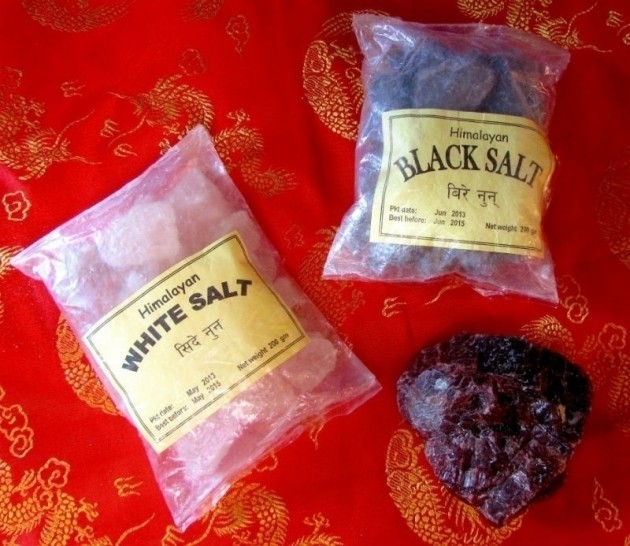1. Nutrient-Dense Leafy Greens - daily, unlimited amounts! The more the better! One or two types at any time. Explore the many kinds. Try kale, mustard greens, collards, dandelion greens, arugula, beet greens, parsley, cilantro, spinach, swiss chard, endive, green and red lettuce, turnip greens, lamb’s lettuce, watercress, fresh herbs, etc… any green leaves.
Here are seven ways to prepare greens:
1. One easy way to use them is to blend greens in a sweet or savory smoothie. Pleasechew your smoothie. You can sprinkle some seeds on top to encourage chewing.
2. Make a raw soup.
3. You can also juice the greens (including the stems).
4. Make a nice salad.
5. Dehydrate some of them.
6. Another way is to cook/steam those veggies in a bit of water on a low temperature.Add onions or garlic for more flavors. A bit of lemon juice or a raw (unheated) nutsauce make the dish tastier.
7. The cooked greens can also be transformed into a warm cooked soup by blendingeverything.
2. A Nice Big Fruit Salad - daily. It can be eaten in the morning and uplifts your energy level for many hours. If you do not like fruit for breakfast, or if liver challenges exist, you can spread them out throughout the day. Emphasize a variety of colors and types. Reduce seedless fruits. You can add a small amount of fat in form of nuts or seeds on top, or add some coconut flakes or coconut cream.
3. A Rainbow Salad From Roots and “Veggie” Fruits - daily. A rainbow salad includes greens (baby greens, rugul, dark lettuce, etc), cucumber, tomatoes, bell pepper, carrots, radishes, sprouts, jicama, kohlrabi, beets, avocado, etc., plus maybe a bit of seeds, herbs, and small pieces of fruit with many possible dressings. You want lots of colors.
4. Cruciferous Veggies - daily. They contain essential antioxidants and are high in fiber, minerals and vitamins. They are crucial in today’s environment and help in preventing many illnesses like cancer. They are best eaten raw (chopped or blended in a soup) or lightly steamed. They include broccoli, red
or green cabbage, napa cabbage, bok choy, cauliflower, brussel sprouts and others. As many domesticated vegetables and greens no longer contain the high levels of calcium they used to, if one is concerned about oxalates a high-quality product like Cal Apatite Bone Builder Vegetarian can be used to bind oxalates in the gut whereby they will be excreted in the stool, negating any potential problems of oxalate accumulation.
5. Edible Flowers - (ORGANIC ONLY) daily, if available. They contain extra nutrients from the plant’s sex-organs and tiny hidden bugs. Some of those flowers are: calendulas, nasturtiums, primroses, violets, geraniums, roses, chive flowers, arugula flowers, mint flowers, basil flowers, zucchini blossoms, dill flowers, clover, lavender, dandelion, chamomile, hollyhocks, hibiscus, tiger lilies and sunflowers. Make sure they have been grown organically.
6. Nuts and Seeds: 2 – 4 tablespoons daily, according to your body size and activity level. They have to be organic, raw, unroasted and unpeeled. If you like them to be ground, grind them fresh to avoid the oil getting rancid. Store them in the freezer or at least in the refrigerator. It is important to rotate nuts and seeds!! Allow several days to pass before consuming the same kind again (ideally one full week). They are complex and you can develop allergic reactions if you eat the same ones all the time (including flax seeds). For more information visit Dr. T’s YouTube video: “Dr. Tel-Oren on Immunogenic Proteins - What All Modern Vegetarians Must Know.” Also rotate other fats such as stable oils from coconuts, olives and avocados. Use only sparingly. For seeds choose: flax, sesame, sunflower and pumpkin. For nuts use: Brazil nuts, pecans, walnuts, hazelnuts, almonds, etc. (no peanuts nor excess cashew).
7. Legumes: about 3-4 times per week. Adding these will decrease overall nutrient density and increase calories, but they provide special nutrients that aid in immune system activity and detoxification. The preferred way is to sprout them but they also can be cooked in water. For legumes use: lentils, peas, garbanzo beans, red beans and others (do not use soy) .
8. Grains - about three times per week, gluten-free. The grains are: quinoa, buckwheat, millet, spelt, amaranth, oat groats, a good organic brown or wild rice. No gluten (except a little bit from oats and spelt in the case of no-known allergies). They can be sprouted or cooked on low temperature. As with nuts, seeds, and legumes, rotate the various grains giving several days in between consumption of a particular grain.
9. Other Vegetables - occasionally, when you feel like it. They are eggplants, artichokes, zucchini, edible mushrooms, squash, etc. Preferably eat raw, otherwise steamed.
10. Various Macro Algaes: 1-2 times per week. They have a lot of minerals. There are various seaweeds and sweet water algae like kelp, sea palm, sea lettuce and dulse. (Spirulina, chlorella and blue-green algae are micro-algae and are often not pure. They would NOT be normally eaten in Nature).
11. Fermented foods - rarely. They are sauerkraut, pickles, kimchi, chickpea miso, rejuvelac, coconut kefir, kombucha, etc. Fermented foods are not for everyone. People with histaminosis of the gut should stay away from fermented foods. Various bacterial strains from the fermentation process are not identical to the bacteria that thrive in and colonize the human gut, which presents a different environment from the fermentation environment of foods. Therefore these mild, non-pathogenic bacteria often do not colonize in the human intestine, but instead just pass through it, temporarily displacing pathogenic microbes. In other words, an
individual doesn’t obtain a long term colonization effect through consumption of thesefoods - when the foods are no longer consumed the colonizing effect disappears and the individual goes back to square one. If the individual takes the correct microbially identifying strains, however (as found within the UltraFlora supplements), then these beneficial organisms actually colonize the gut for the long-run.
12. Natural dust, dirt, bugs, insects - when it happens. You get them from your garden or from foraging. We do not want everything totally sterile. They add Vit. B12 and other nutrients to your diet, which can be supplemented instead if you don’t have your own organic garden or foraging opportunities.
13. Water - enough, but not in excess. The amount varies according to the person, environment, and activity level. A lot of fluid is present in fresh vegetables and fruits. Most of the water in urine derives from normal energy metabolism. Excess water can overwork your kidneys and deplete your electrolytes. Generally drink water (room temperature, NOT carbonated) when you are THIRSTY or losing a lot of water via sweat during intense work-out or sauna. NEVER drink water during the 2 hours after a meal or the 30 minutes prior to a meal (in cases of thirst, you can drink 15 minutes before you start eating).
14. Love, joy and light - always
~ Foods to AVOID/MINIMIZE for Optimal Wellness ~
1. Animal products - including eggs, poultry, and fish, but especially milk. Amongnumerous other reasons (listen to protein lecture available atwww.TheTruthAboutYourFood.com), they are too acid forming for humans, and increase inflammation and toxic load on the liver.
2. Refined foods like white flour or sugar (and reduce or eliminate gluten-containinggrains and products. If you are gluten-sensitive - as shown on the Stool Antigens testpanels developed by Dr. Tel-Oren - you will need to completely avoid all gluten!). We want to stay close to Nature in our food choices.
3. Processed food with additives, coloring and preservatives. Consumed on a regular basis they are very harmful. (For more information listen to "Cooking and Food Processing" lecture available at www.TheTruthAboutYourFood.com)
4. Processed sweeteners like sugar, agave, and maple syrup. Any artificial sweetenerlike aspartame, splenda, nutrasweet, etc. We can use dried fruits like dates or figs and make a paste or syrup with them. (For more information listen to sugar lecture available at www.TheTruthAboutYourFood.com)
5. Processed (refined, anti-caking) salt. Use Himalayan Sulfur-Rich Black Salt (sulfurhelps in the critical detoxification pathway called “sulfation”), or Himalayan Pink Salts (use sparingly, as these may be contaminated by heavy metals and are not as supportive of detoxification as the sulfur-rich black salt). Natural sodium is also in vegetables like celery and in seaweeds.
6. Any extracted nut or seed oils like flax, canola, safflower, soy, corn, hemp,cottonseed, etc. They are unstable and easily get rancid. Also, hulled seeds or seeds that are not freshly ground are not a good choice. Instead we can use whole seeds and tropical oils like coconut oil, olive oil, avocado, and Red Palm Oil (be sure that it’s “Orangutan-Friendly” and not from Indonesia). (For more information listen to fat lecture available at www.TheTruthAboutYourFood.com)
7. Addictive stimulants like caffeine, cola, cacao (chocolate), alcohol, prescription andrecreational drugs poison us immediately, and drain the body in the long term. Occasionally organic red wine without any sulfites added is the best choice if you want to have some alcohol, which is not recommended.
8. GMO contaminated foods like corn and soy - including tofu, tempeh, tamari, namashoyu, etc. A possible alternative is chickpea miso. But avoid fermented food in excess!!
9. Unsafe water (especially with added fluoride). The safest water is purified water with added trace minerals (like ConcenTrace Mineral Drops). Do not drink and eat at the same time - do not drink within 30 minutes prior to consuming food (15 minutes at the absolute minimum) or within 2 hours following food.
10. All inflammatory foods. This means: no animal products (including all dairy and egg products), gluten, soy, peanuts, or corn. In some individuals, it may be necessary to eliminate other food offenders specific to each person. A simple stool test can assess sensitivity to various proteinaceous foods - making the elimination process easier for those who can afford it. Other inflammatory foods include the aforementioned harmful oils, processed/packaged foods, smoking, alcohol, drugs, and other toxic exposures - including foods that aren’t organic.






